Shanks for the Memories
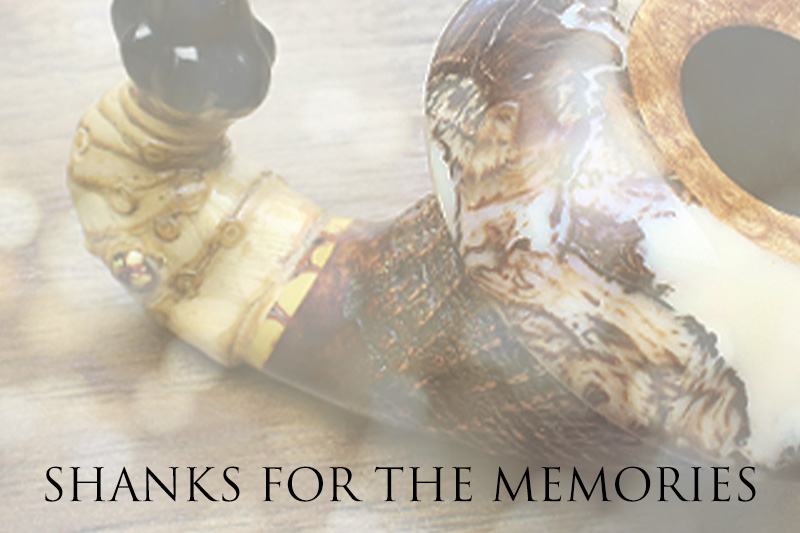
Pipes are not complicated instruments. They've been called blocks of wood with two holes, a definition that would make them among the simplest devices, but we pipe smokers know they're more than that, especially those who appreciate fine craftsmanship. However, for a pipe to function, it requires only fundamental components.
They must have a mouthpiece so there's a way to draw smoke from the bowl into the mouth. They need tobacco chambers so there's a place to burn our favorite blends. Most often, they also require a shank, though there are exceptions. The shank is an unsung hero of the pipe world, connecting the stem to the bowl and providing a channel through which smoke may travel. Though they vary enormously in design, shanks are both highly functional and may be interpreted in a number of design possibilities.
There are long and short shanks, pencil shanks, metal shanks, carbon fiber shanks, leather-wrapped shanks, glass shanks, bamboo shanks, asymmetrical shanks, boxwood shanks, expanding shanks, and every permutation conceivable by the imaginative devices of talented pipe makers. Some shanks disguise themselves as non-shanks and there are even shankless pipes with only a mouthpiece directly entering the pipe bowl. Shanks are an integral part of pipes and a bold design statement is made when they are omitted.
What is a Shank?
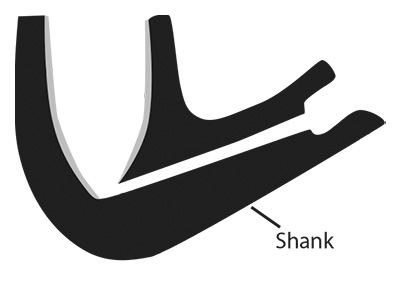
Like nearly everything concerning pipes, the definition of a shank is difficult. If we consider it an extension from the bowl, not all pipes have shanks. If, however, we define a shank as the part of the pipe where the smoke channel is drilled, then virtually all pipes have shanks because that channel is necessary for carrying the smoke to the stem. Some Corn Cobs and specialty pipes have stems that plug directly into the bowl exactly where the smoke hole at the bottom of the tobacco chamber lies, and these alone would have no smoke channel. So depending on definition, some pipes have no shank. And creative pipe makers will always find a way to subvert definitions.
For traditional pipes — those with obvious shanks — the shank is the least handled component of a pipe. Some people hold a pipe by the shank when smoking, with a finger draped over the top, but most of us hold the bowl. For traditional briar pipes, the shank is the connector between the mouthpiece and the bowl. It is most often part of the same briar as the bowl, though exceptions certainly exist.
Shanks and Shapes
Some shapes require particular shank configurations. Part of the definition for Canadians and Lumbermans, for example, is that they have oval shanks. Unspoken but tacitly agreed upon is that the oval be horizontal rather than vertical.
Liverpools, Billiards, and Lovats are partially defined by round shanks. The length of the shank is also important to these shapes. Billiards have a shank approximately the same length as the bowl's height, while Lovats and Diplomats have shanks longer than the bowl's height. Some exceptions apply, of course. A Billiard with a bamboo shank, for example, is still considered a Billiard despite a Lovat-length shank. It's almost as though a shank made from a different material from the bowl doesn't count for shape definition.
For a pipe to be considered a Bulldog, it must have a diamond shank. Rhodesians are essentially Bulldogs but with round shanks. An Author has a round shank. An Eskimo has a broad, flat shank, often starting as wide as the bowl and tapering in the horizontal plane toward the stem. The Fish shape most often includes a defining ridgeline along the shank. The Hawkbill requires a downward turn of the shank as it approaches the stem. The Horn shape necessitates a gradual diminution in circumference from the bowl to the mouthpiece. The Ramses needs an upright, shield-like character to fit the shape definition correctly.
However, pipe makers make pipes as their vision dictates, and pipes are often an amalgamation of different traditional shape elements. Sometimes they fit into a named category, and often they do not. Artists do not care about definitions. As with tobaccos, pipe definitions are merely tools for approximate mutual understanding.
Inside the Shank
Among the shank's most essential functions is providing a medium through which the smoke channel is drilled. This channel carries the smoke from the tobacco chamber to the mouthpiece. Without a smoke channel, there would be no draw and no smoke, like sucking on a dowel. Many different approaches to smoke channels have evolved, however, and they can affect the shank's style. With the variances in smoke channels, a lot happens inside the shank.

Peterson System
Peterson System pipes, for example, require a larger shank to accommodate the moisture well. Because the reservoir is gravity-fed, it works only with bent pipes in an upright position. One does not want to turn a Peterson System pipe over when its reservoir is full, lest the moisture spill out where it's least wanted which is anywhere. Savinelli's Dry System works in a similar manner, but their balsa filter pipes provide a different approach to moisture elimination. They do, however, also require a larger shank, and pencil shanks are likewise eliminated. Brigham's Rock Maple inserts require their own accommodation. Their size is not excessive, but pencil shanks for a Brigham system would not be possible.
Reverse Calabash pipes feature drilling that likewise affects the shape and size of the shank. The relatively large condensation chamber requires a very wide shank. Various shapes impose requirements that affect shank configuration, but the shape is only part of the equation.
Smoke Channels
Traditional smoke channels for most pipes are 3mm-4mm in diameter, with some latitude and license for larger drilling according to the needs of the pipe and the preferences of the maker. For example, some makers provide larger-diameter smoke channels with extra-large pipes, so that increased draw volume accommodates the large tobacco chambers. Some enthusiasts, most famously Rick Newcombe, custom-order or modify their pipes for larger draft channels that perform better for their personal style of smoking. In these cases, the internal engineering of the shank is changed but the external characteristics remain the same.
At the end of the shank, the smoke channel meets the mouthpiece, usually in a mortise-and-tenon configuration. When a stem attaches directly to the bowl without employing a shank, or when it attaches to an oversized shank or a design like the Blowfish or Nautilus, it's often a push-style stem, where the stem has no tenon but plugs directly into a mortise.
Scottie Piersel's pencil-shanked pipes use a reverse-tenon configuration to better accommodate the stainless steel tubing that strengthens the small diameter.
Traditionally, the shank is part of the same briar (or morta or meerschaum) as the bowl, though exceptions include shanks of boxwood, carbon fiber, and bamboo, among other mediums. Pipe makers have all the latitude of any artist and can achieve remarkable feats of design.
Even pipes without shanks require a smoke channel, however abbreviated it may be.
Visual Appeal
The fun is in seeing the designs that evolve in pipe makers' imaginations. A shank contributes to a pipe's shape and character. Although it is seemingly a lesser design element, it is fundamental to whether we are attracted to a particular pipe.
Since we all love pipes and enjoy seeing how they may be configured, it is no waste of time to provide some images to examine how shanks can dramatically affect design.
Peterson System pipes have defined their own design language. Their style is often referred to as "tubular," and it's easy to see why when viewing this 5s Calabash, one of the Irish marque's oldest and most popular shapes. The shank is almost as wide as the bowl, accommodating the moisture reservoir of the famous System.
The Fan is a fun shape that highlights the natural grain patterns of briar. Since a briar burl's grain radiates outward from its center, the Fan is perfectly situated for grain display. The original size of the burl may be inferred by extrapolating a sphere from the curve of the plateau top. Is there a shank in this shape? I would argue no, but there is an extension from the tobacco chamber within which a smoke channel is drilled, so some might argue otherwise.
Another Autograph, this Freehand provides some visual sleight of hand. The stem plugs into the top of the bowl, and there's an abbreviated smoke channel within, while a decorative extension of briar trails away and looks like a shank without a mouthpiece. The stem is ingenious. Narrow and willowy and tapering away from the bowl, it's an entirely different element yet resonates with the design, even in its striking blue coloration.
Things get really fun when we start looking at the creations of Werner Mummert. This Reverse Calabash Barrel certainly has a disguised shank. The pipe is a cylinder. There's plenty of inventive engineering going on inside, but from the outside, it appears to be simplicity itself.
Werner Mummert is an endless source of creative shanks. With steampunk attributes, this is far from a simple Poker, though the bowl adheres to the basic principles of the shape. The reverse-Calabash engineering is encapsulated in a glass shank held in place by springs. It's simply a remarkable feat of design.
More Mummert. As mentioned, Werner is among the most creative designers in existence, as is evident with this bulldog. What a bold statement it is. The shank here is the dominant feature, tall and angular and carrying the same sandblasted grain as the bowl but in different planes. The shank appears triangular in this photo, but it is a kite-like diamond shape with four sides, the underside possessing shallower angles than the top.
Similarly dramatic, this Mummert Brandy plays with the traditional aspects of shanks by expanding away from the bowl and balancing the visual weight of the piece evenly between the bowl and stem. From the underside, the shank widens in a triangular fashion to the stem, although it appears straight from a side view. Geometry plays an important role in Werner's designs, juxtaposing the rounded Brandy shape of the bowl with the triangular aspects of the shank.
While this look at shanks is not intended to be dominated by one carver, Werner Mummert deserves a couple of more looks. They aren't shanks that are seen every day:
LEGOs and billiard balls ... with these two pipes, it cannot be said that Werner does not like to play games. If they weren't so expertly constructed they might be mistaken for toys, but they are sophisticated smoking instruments with shanks that are far from ordinary.
Just one last Mummert pipe: a paneled Cavalier. The shank may be said to be in two parts: the short horizontal black portion, and the tall brown section. Werner employs three different stains to visually segregate the three sections of the pipe and maintain a squared geometry to demonstrate that even simplicity can be complex. It's almost a composition of sarcasm, but in reality, it's a demonstration of his monumental talent. Like the French Impressionists, who used small, obvious, simple brush strokes to evoke miracles of light and color, Mummert here uses the simplest of geometric forms to construct a mesmerizing composition greater than the sum of its parts.
This appropriately named Alien by Wojtek Pasuch seems to have shanks sprouting from all over it, its complexity confusing the vision with its otherworldly character.
In front of a white background, the Ivorite shank of this Pastuch Speared Snail almost disappears, leaving the flailing Snail shape seemingly independent. Our sensibilities would lead us to believe that the shank is the curving black extension from the bowl leading to the lofty — what, eyestalks? Pseudopods? It's hard to say, but the impression is certainly snailish, and the visual impact is heightened by Wojtek's choice of shank.
In a similar design, Wojtek again provides an optical illusion regarding the shank. The perfect arc of what appears to be the shank curves gracefully upward, while the true shank pierces it and enters the bowl. It's a playful approach and results in a pipe whose characteristics are certainly unique.
This Brandy by Scottie Piersel is more traditional but certainly not commonplace. It demonstrates what a very long and thin shank can provide in terms of design. The shank is less than the width of a pencil, so thin as to be counterintuitive. One may think, how is this possible? It seems so fragile. Yet with its stainless steel tubing to provide impressive strength and durability, it's as tough as a regular pipe.
Wolfgang Becker's Wasp is a signature shape, and the shank treatment is a large part of its appeal. Soft curvature dominates the design, and the visual balance of the bowl and shank equals each other as the shank expands toward the stem.
While the bowl flares outward dramatically at the rim, the gradual diminution in circumference makes this Horn by Wandi Ryadi look like a working musical instrument. There is no abrupt shift from bowl to shank, only easy curves punctuated by the texture of a remarkable rustication.
This Acorn by Viktor Yashtylov is all about soft curvature, especially in profile. The rim itself is designed as though it could accommodate the shank as a pipe rest. The shank exits the bowl and expands gracefully in an upward curve to the accent, which continues the expansion.
Three well-matched pieces of bamboo comprise the shank of this Almond by Adam Davidson, and it's a marvel of design. It isn't as complex in terms of engineering as it could have been: only the center stretch of bamboo carries the smoke channel. That doesn't mean it was a simple piece to make, though. Finding three pieces of bamboo that so perfectly match must have been challenging to say the least. Adam often pushes far beyond creative expectations.
Todd Johnson demonstrates that shanks' visual interest is not limited to texture and grain. Here, the shank is wrapped in blue leather, beautifully stitched along its topside. This composition demonstrates that the shank can be the most visually magnetic element of a pipe.
A delicate hand is necessary for carving of this caliber. The briar wraps three times around the shank on this Tadpole by Sabina Santos, and it's hard to imagine how difficult it must have been. It leaves us with a shank treatment that is impressive and endlessly fascinating.

Sergey Senatorov Sandblasted Bent Dublin
This reverse Calabash by Sam Cui and bent Dublin by Sergey Senatorov both experiment with the idea of symmetry in profile. The extra-large shank balances the bowl's visual weight on each pipe.

Rolando Negoita Rusticated Conducta
The late Rolando Negoita was among the most creative designers in the world of pipes, as evidenced by this remarkable Reverse Calabash, evoking the angular presence of a plumbing system more than a typical pipe. It is also a Cavalier with a removable cap at the end of the shank.
The Ramses shape, originated by Swedish legend Bo Nordh, is characterized by a broad, upright shank of regal bearing in a shield-like shape upon which the bowl appears to be placed. This rendition by Peter Heding features a steeply rising configuration for a full-bent pipe with exemplary grain.
In this Walking Fish by Nanna Ivarsson, one can almost see the natural movement of a fish. The shank seems to maintain an independent trajectory rather than a simple connection to the bowl, sweeping outward in an arch when viewed from above. Nanna incorporates asymmetry in the shank, which resembles the wavy tail of a fish.
Roman Kovalev often utilizes gnarly and unusual sections of bamboo in his designs. This Calabash features a remarkably angular piece of bamboo, which dominates the design. A particularly interesting aspect is that the knobby structure of the shank is echoed in the base of the stem.
We'll end our pictorial review of interesting shanks with this Insanus Apple by Ser Jacopo. It's one of the most hilarious pipes currently produced. Pipe maker Paul Tatum revived the concept in the early 2000s from an antique pipe book, and Ser Jacopo has developed their own version to the delight of many amused smokers. The shank configuration is certainly a conversation starter and an excellent example of a shank design that defines and characterizes a shape.
We often lapse poetic about the shaping of a bowl or the precision of a well-made stem, but pipe shanks seldom enter the conversation, except with pipes such as these. They embody the possibilities of this element of pipes. We might remember that the shank is not only an essential component that makes pipe smoking possible, but that the endless imaginations of talented pipe makers often highlight it as a remarkable design element.





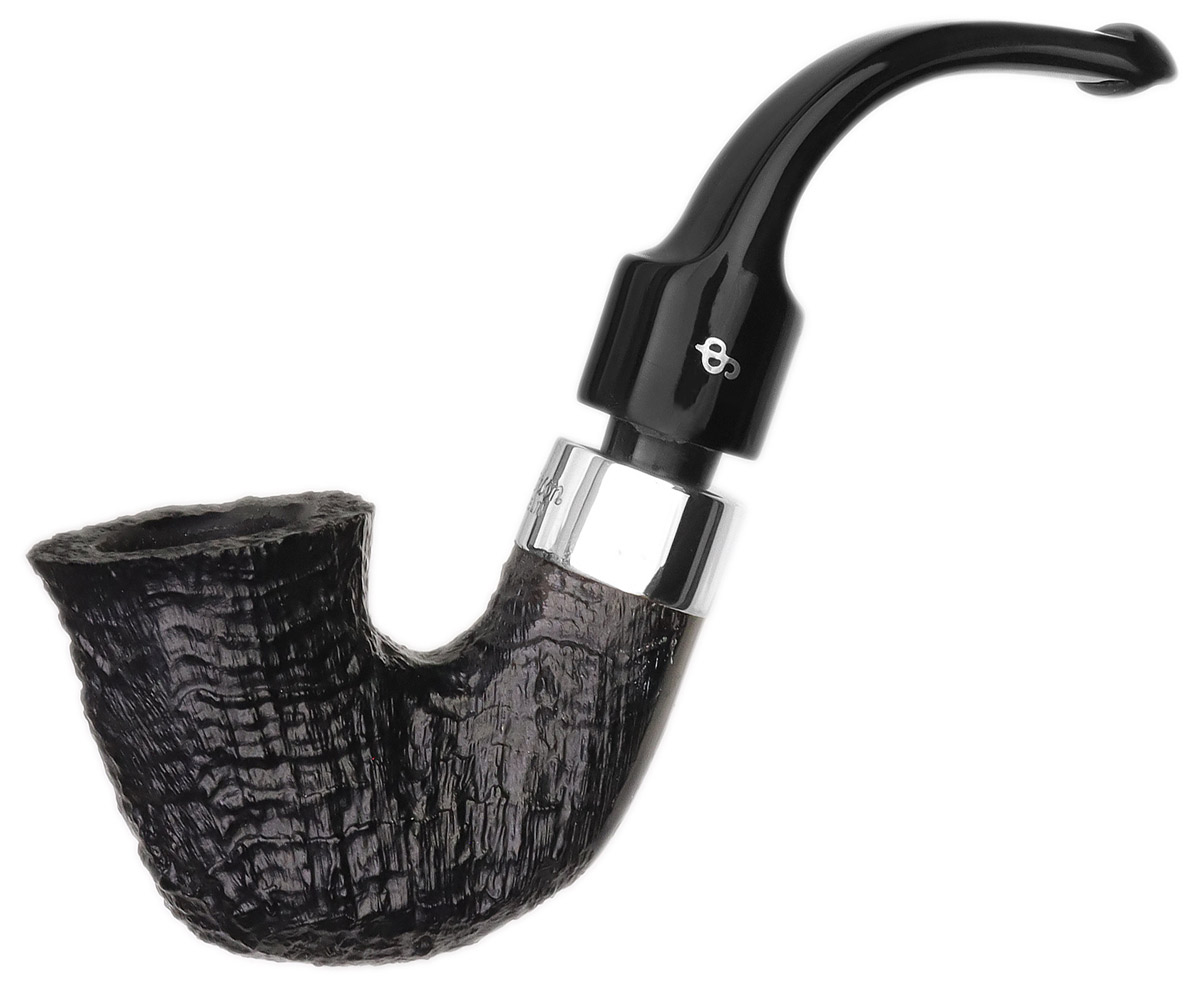
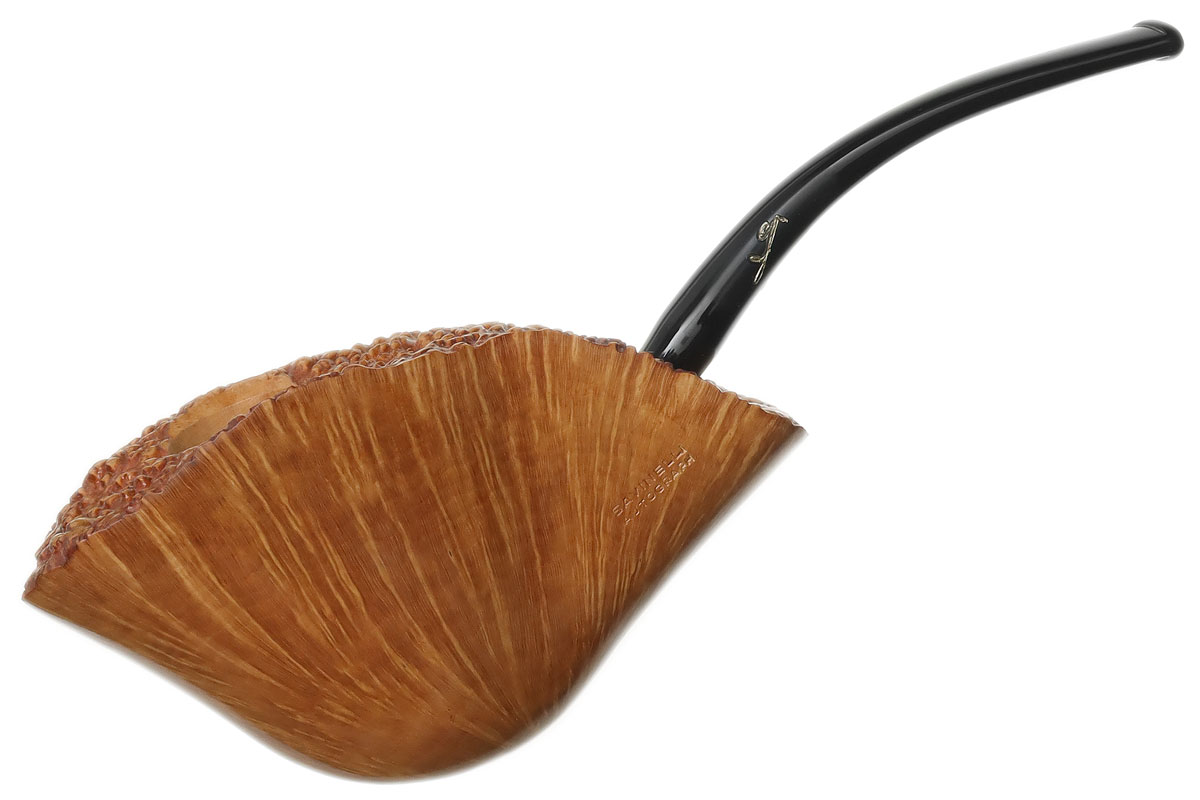
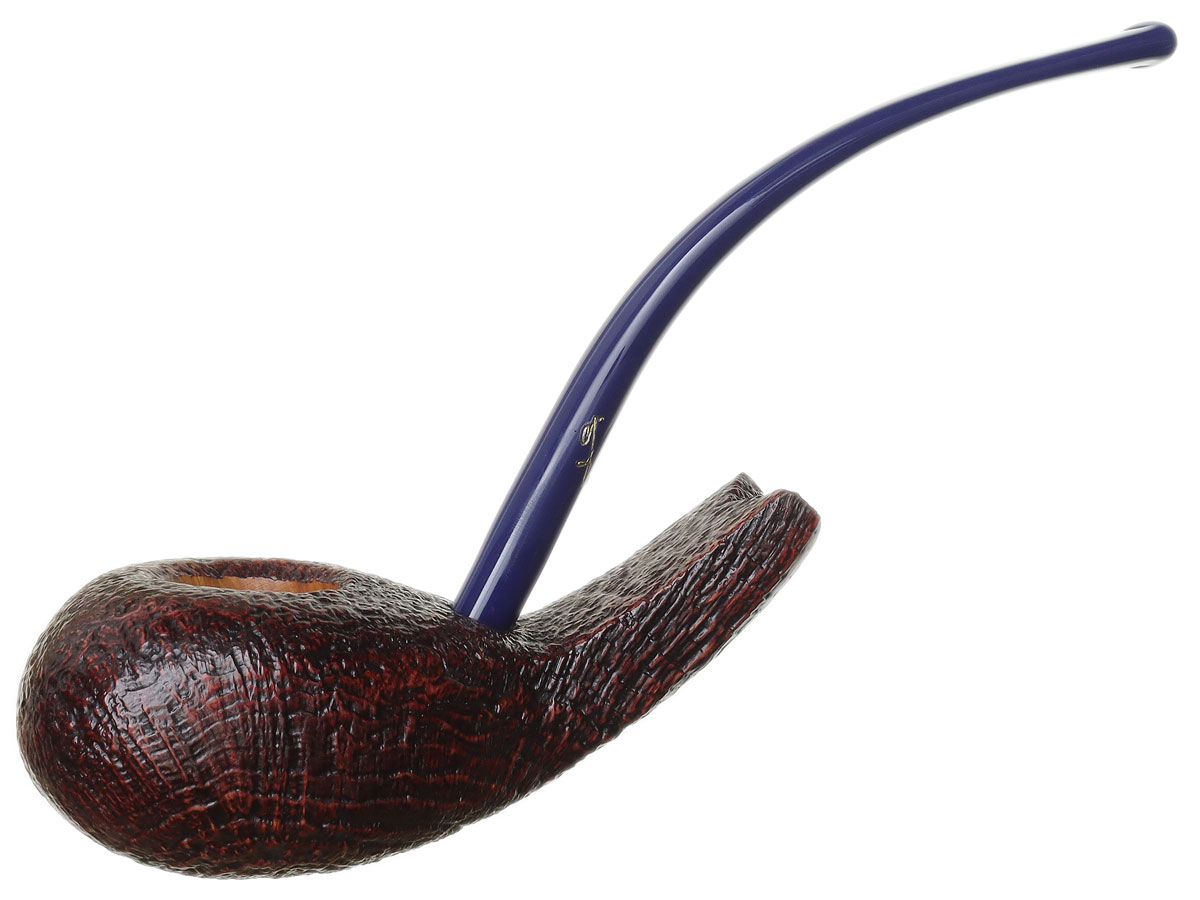


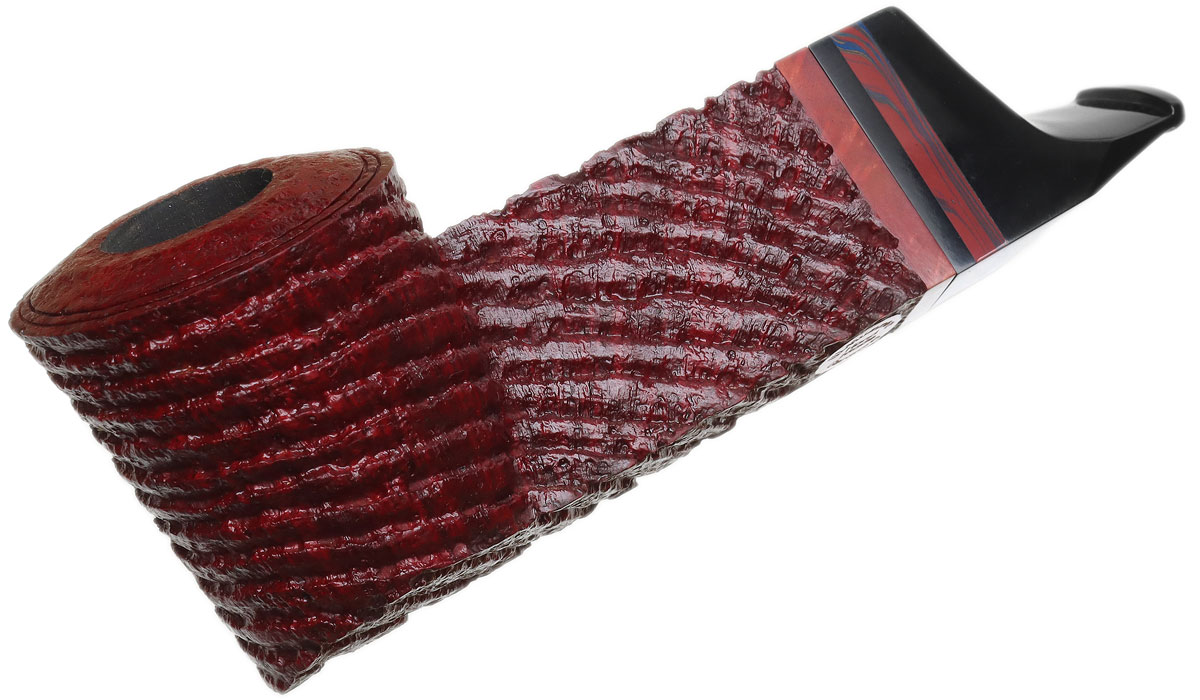
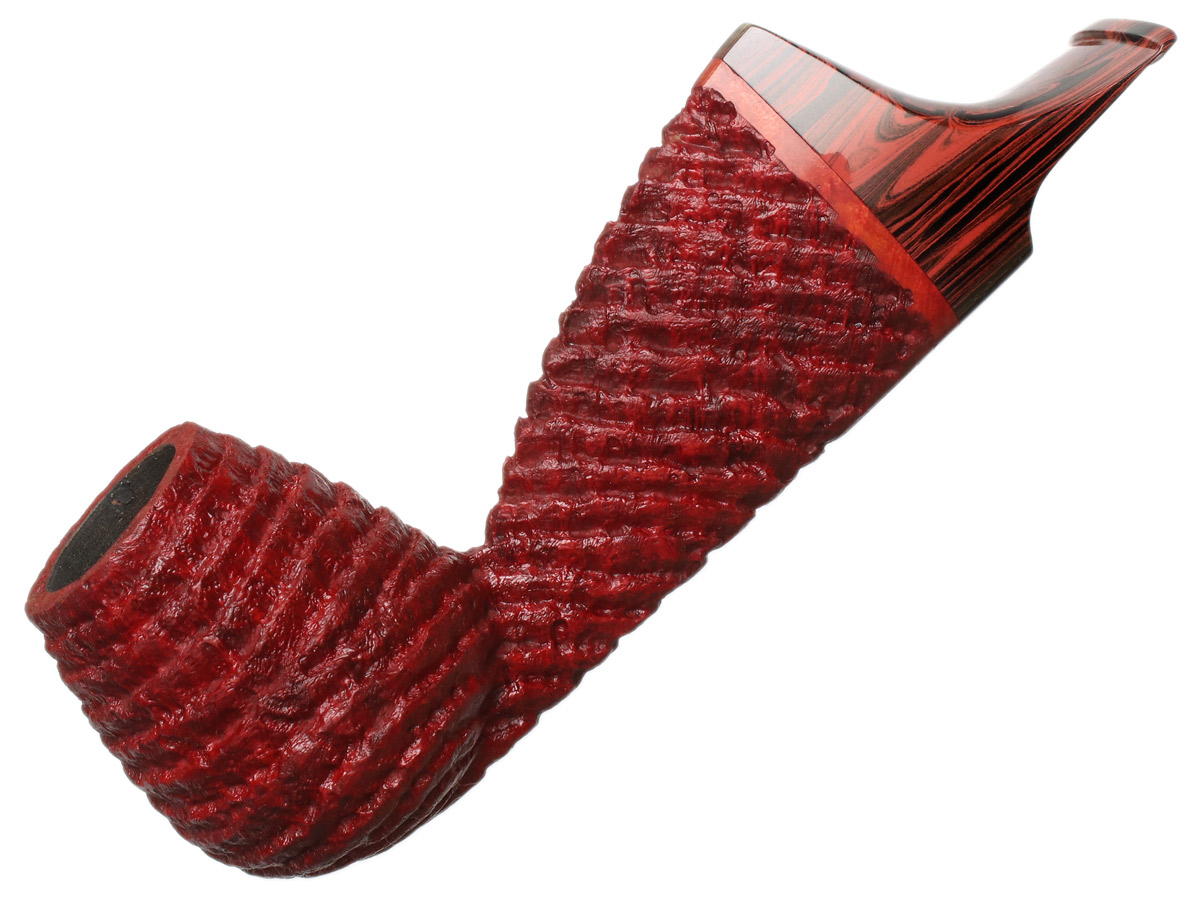
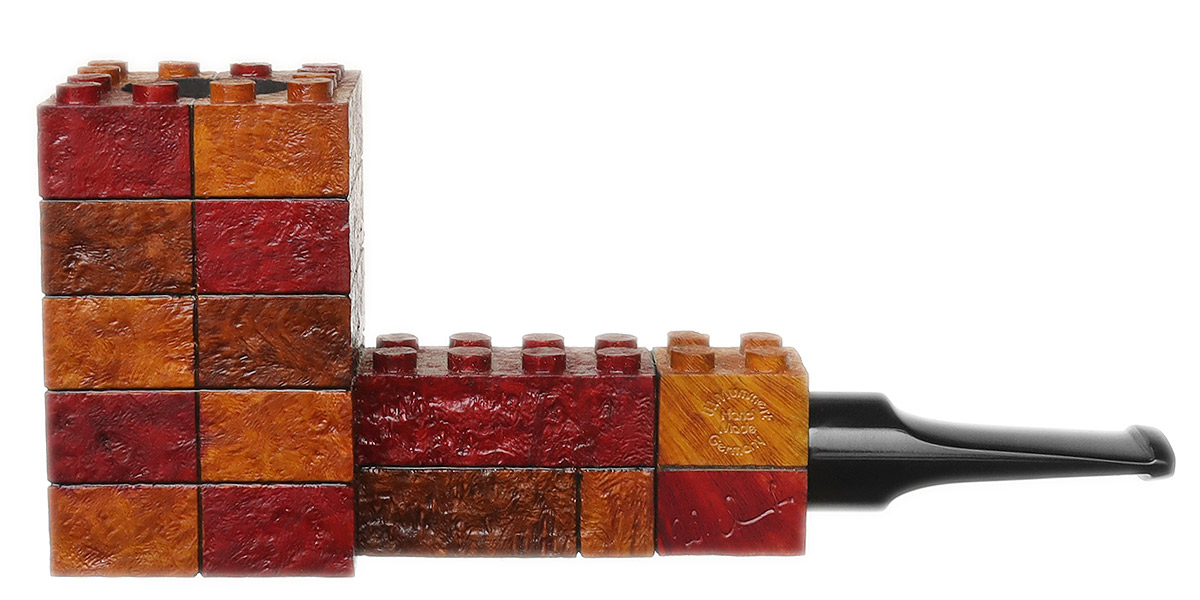
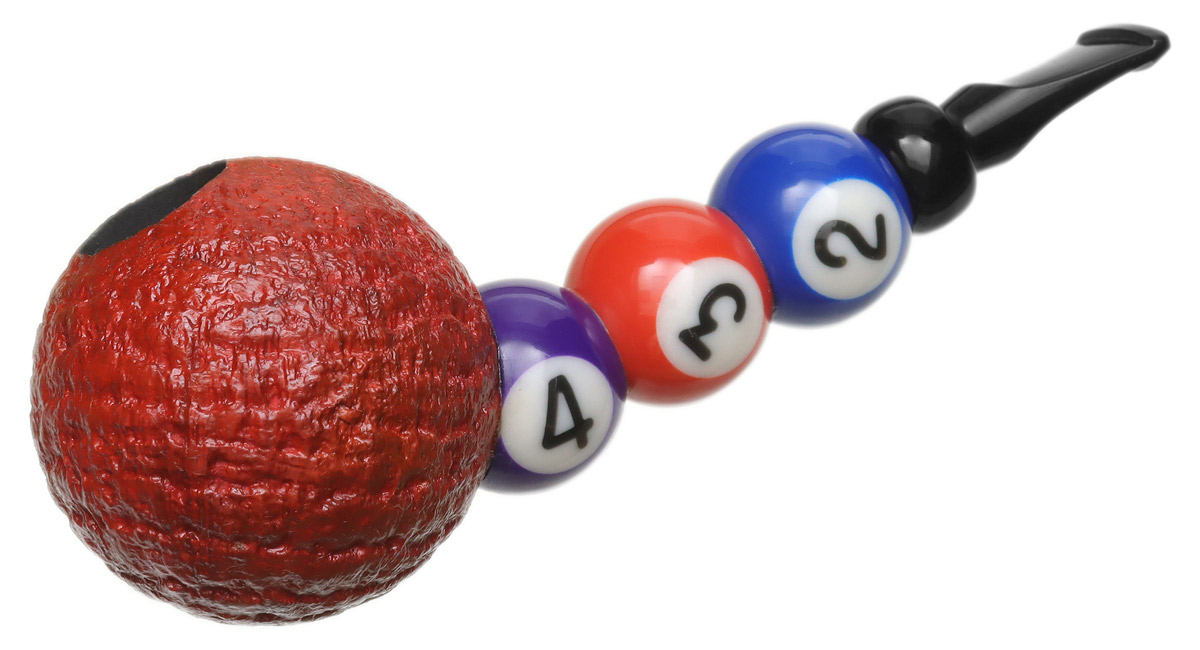
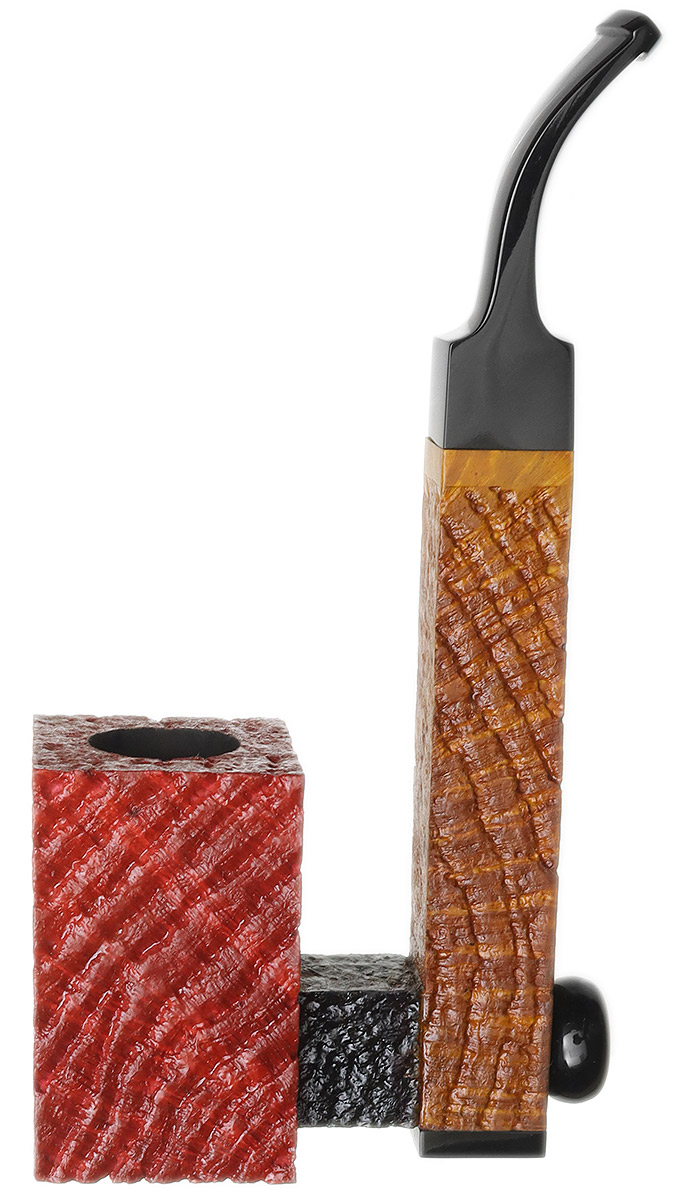

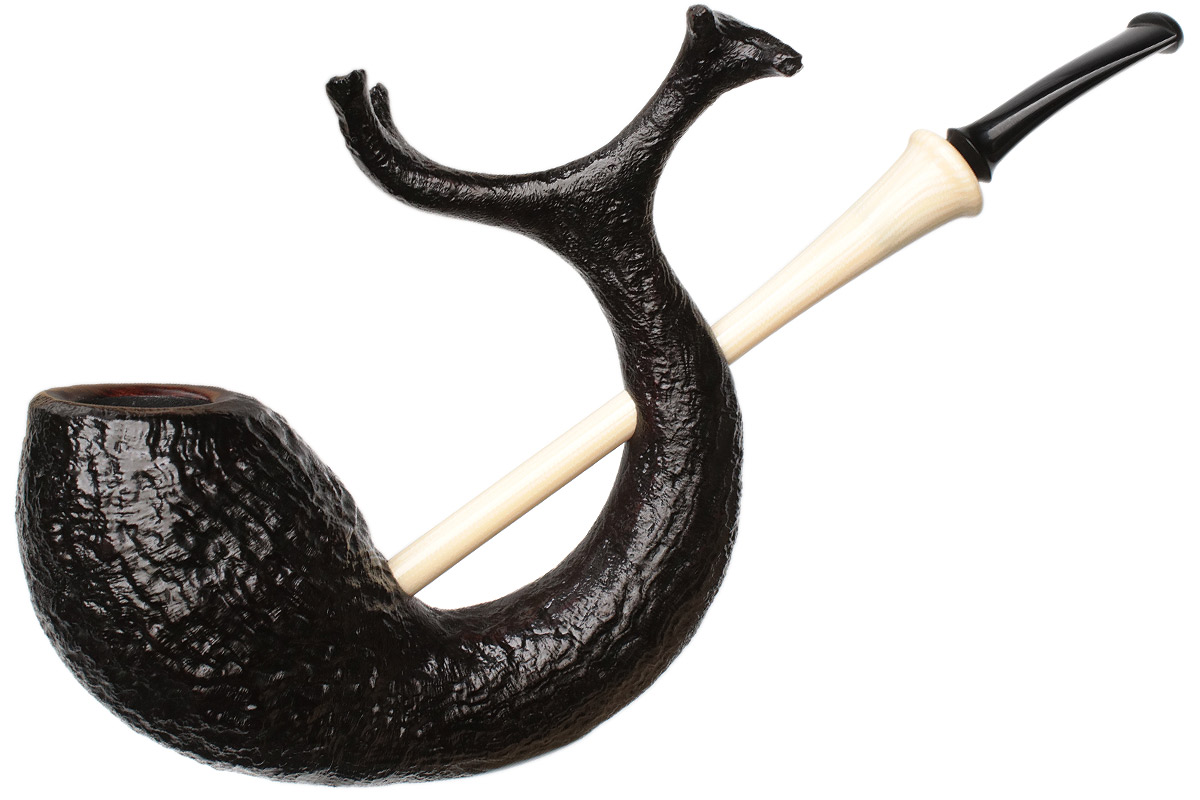

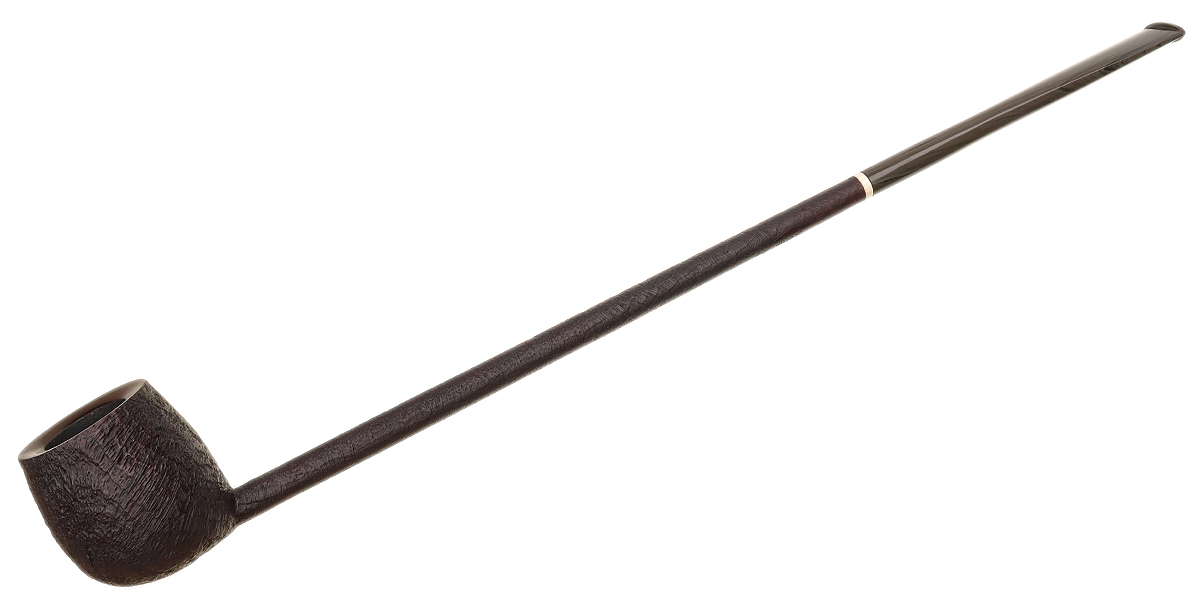


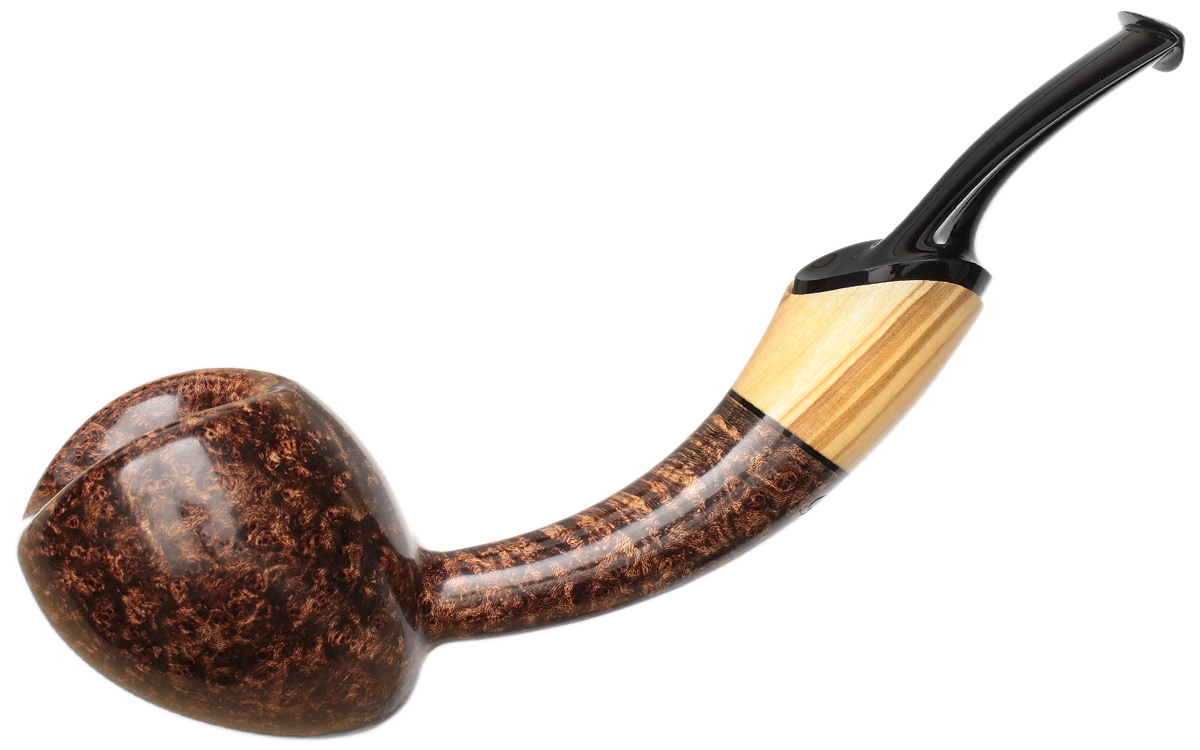
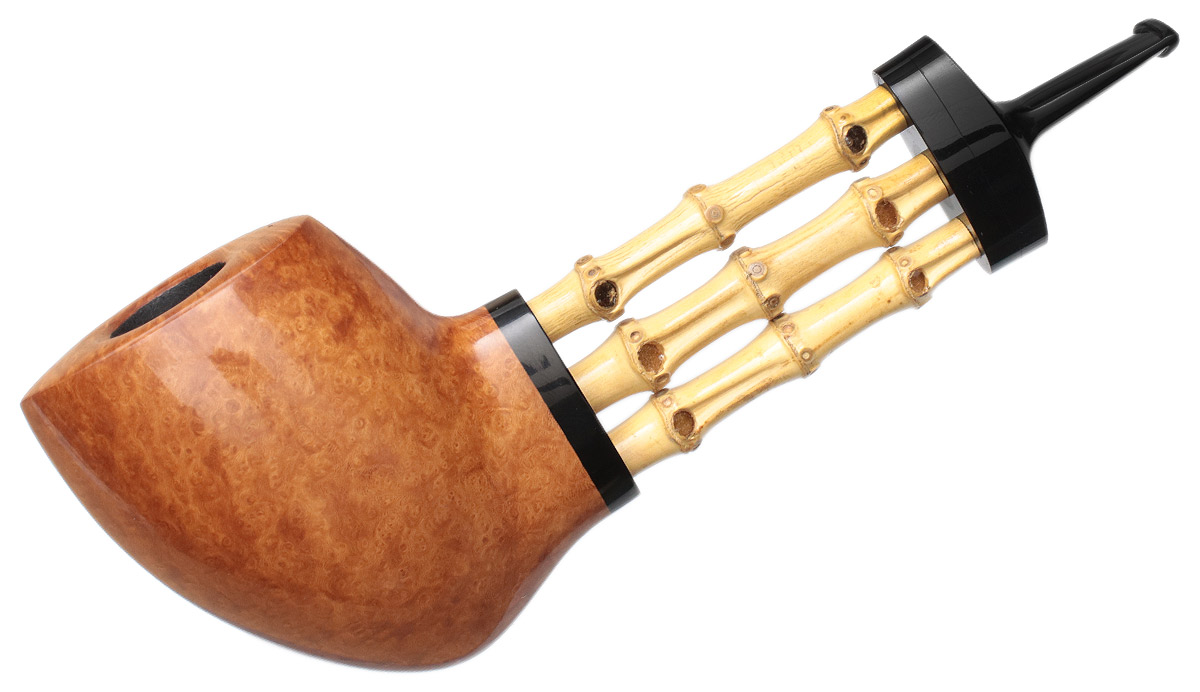






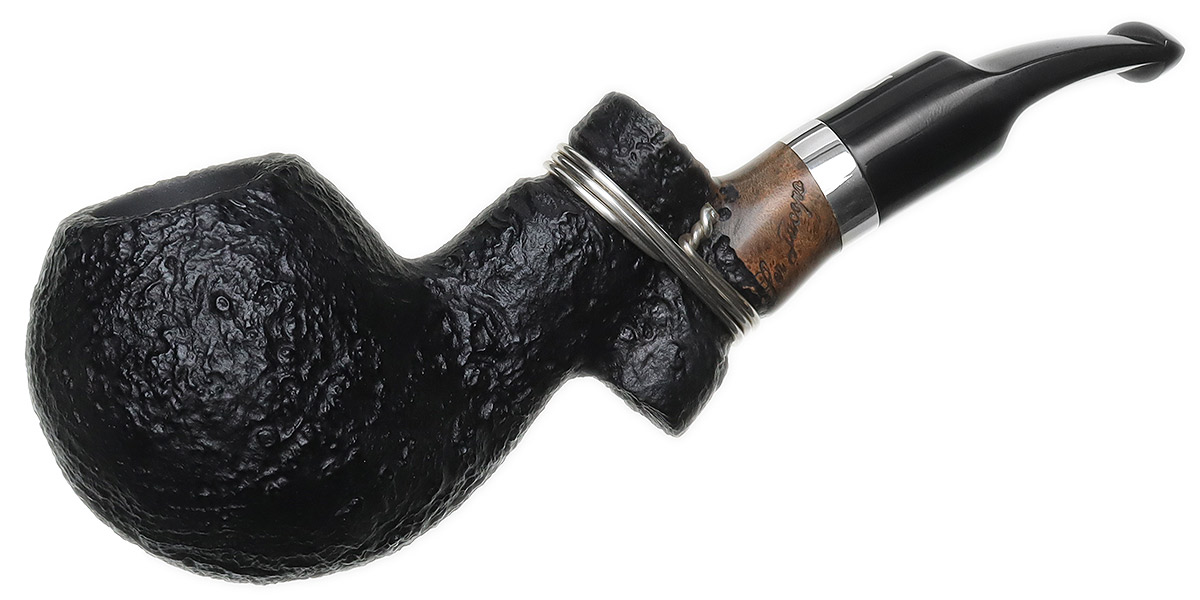





Comments
Great article, great pics, but where's the second Savinelli Autograph photo?
Thanks, Phil! The missing photo is there now.